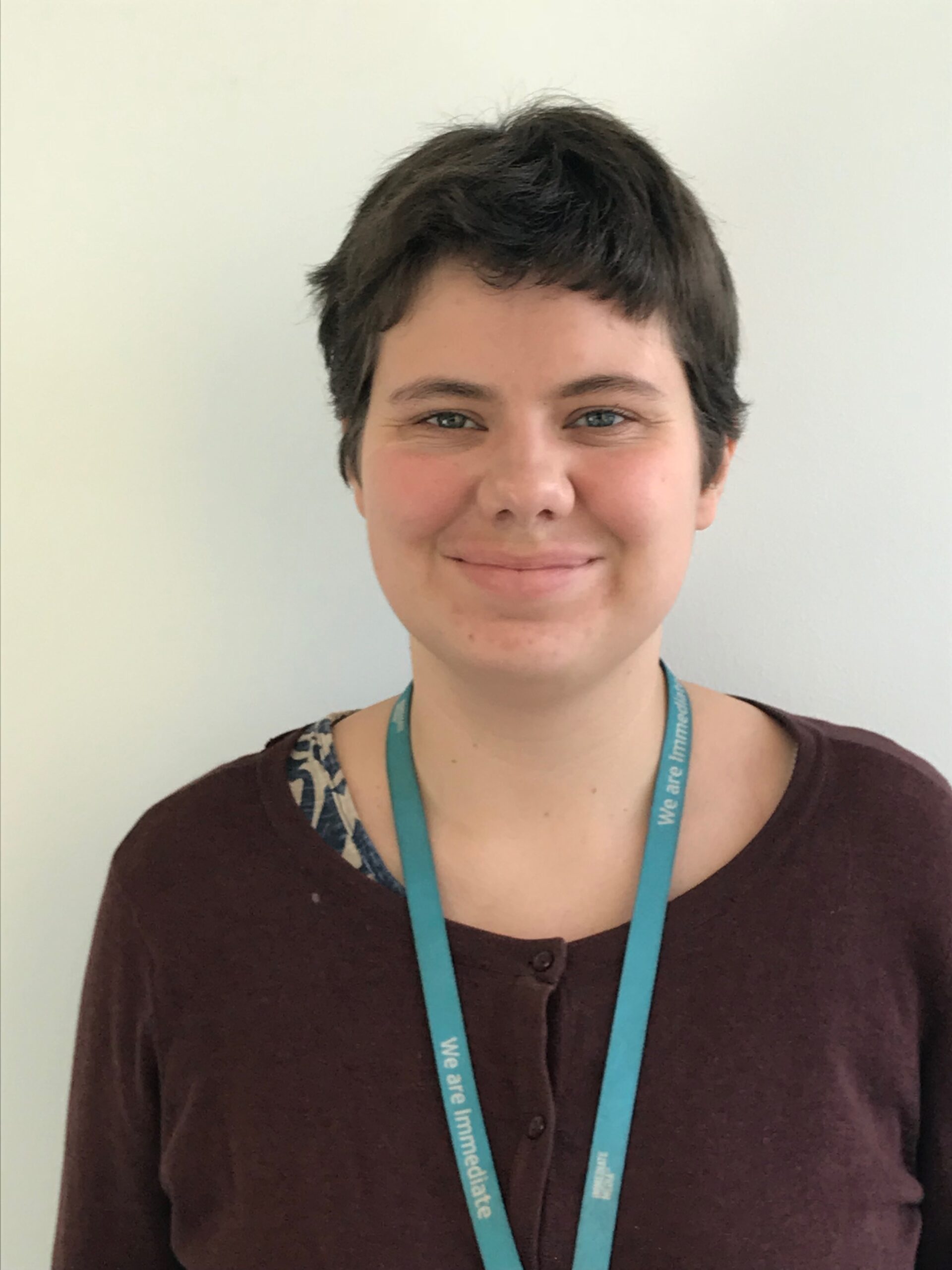Please note that this article contains historical terms which may be offensive to modern readers
Former England footballer Alex Scott says she’s always been inspired by her mother and grandmother. At the same time, she says at the start of her episode of Who Do You Think You Are?, being biracial meant that she sometimes felt “lost”: “I wasn’t black enough to be black. I wasn’t white enough to be white. Who am I? Where do I fit?”
Alex starts her journey by talking to her mother, Carol. She’s surprised to learn that her maternal grandmother’s family were Jewish immigrants from Russia. Her mother describes Alex’s great grandfather Philip Gittleson, known as ‘Phil G’, as a classic East End character, who worked illegally as a bookie’s runner and still loved to go out dancing in his seventies and eighties. In a phone call with Carol’s cousin Gabby, Alex discovers that Phil was involved in the Battle of Cable Street, when protesters blocked a Fascist march in the East End in 1936.
Taking her family tree back further, Alex learns that Philip’s parents Morris and Dora Gittleson fled Lithuania, at the time part of the Russian Empire, to escape anti-Semitic massacres known as pogroms. She also learns that Philip’s brother Abraham was admitted to an asylum in 1934 and remained there until his death, despite his wife asking for him to be discharged so she could care for him at home.
As someone who’s struggled with her own mental health, Alex relates to Abraham’s story. “It’s really a mixture of the sadness,” she says, “but actually that I’m so happy now that I know the story and I feel a connection to a side of my family that I never knew.”
Next, Alex meets historian Tony Kushner to find out more about the Battle of Cable Street. On 4 October 1936 Sir Oswald Mosley, leader of the British Union of Fascists, attempted to lead a march through a predominantly Jewish area of the East End. Local residents and anti-fascists blocked the route, leading to clashes between police and counter-protesters. Tony says that as a bookie's runner, Philip probably knew everyone and helped coordinate the protest.
Looking at a mural commemorating that day, Alex says: “To be here and understand my mum’s family were part of that is something special.”
Next, Alex wants to find out more about her paternal grandmother Philicita Scott, who she was very close to. She meets her cousin Marie, who shows her the marriage certificate for Philicita and her husband John. They were married in 1946 in Port Antonio, Jamaica. Philicita’s father was called Cleveland Guest and John’s was called Edward Scott.
Alex heads to Jamaica to find out more. She meets historian Dalea Bean, who tells her more about Edward Scott. He appears in the records with various jobs listed, including servant, sailor and engineer. Passenger lists show that he sailed to America, something few working-class black Jamaicans did at the time.
“He was so ambitious,” Alex says. “He wanted to travel, he wanted to better himself. There’s an instant connection with Edward’s story, which I love.”
Next, Alex looks at her grandmother Philicita’s line. She learns more about Philicita’s grandmother Hernietta Coombs, who had a hard life, working as a servant and labourer and surviving the deaths of her first husband, her mother and two of her seventeen children. Hernietta’s baptism certificate describes her as a ‘sambo’, a derogatory term for a black person with a white grandparent.
Alex meets historian Dr Suzanne Francis-Brown, who shows her the baptism record for Hernietta’s father Samuel Coombs. He is described as “of colour”, another term for someone with mixed heritage. His parents Robert Francis Coombs and Frances Tracy lived during slavery but were not enslaved. Next Alex learns that Robert Francis Coombs owned slaves himself, as some free people of mixed heritage did at that time.
When slavery was abolished in 1833, Robert submitted a claim for compensation for 26 slaves. In his will of 1851, he left Frances Tracey, described as his housekeeper, a yearly annuity of £15, and made provisions for her to live in his house after his death. He also left a legacy to Eleanor Francis Tracy, one of his former slaves, and to the children they had together, Edward and Diana Coombs.
“At the start of this journey,” Alex says, “I thought we’d touch on slavery but I didn’t think that my family owned property in terms of owning people. It was hard to take. I don’t think the stories are told a lot about black people owning slaves, that ownership of a human life is so wrong. I can picture sitting in my nan's room, telling her of the journey I've had here. My connection with my nan was so strong. Knowing what her family went through - people hid their past ‘cos maybe they see it as something people will frown upon if they tell true stories. But actually I will never be ashamed of my history, because it’s made me the person I am today.”
